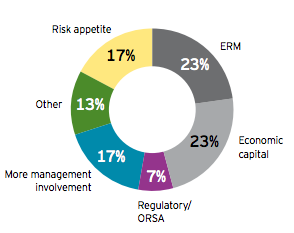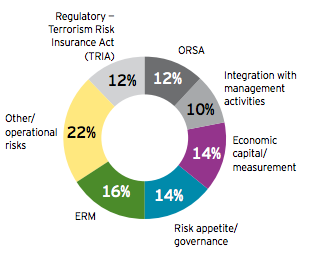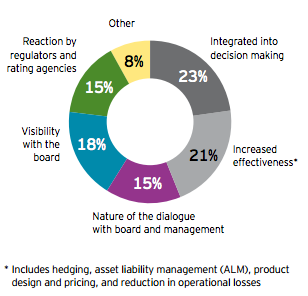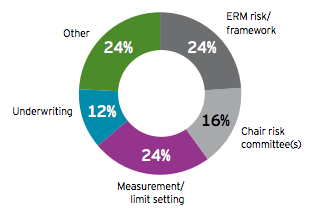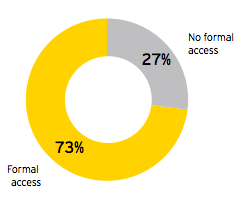Before the financial crisis in 2008-2009, many businesses didn’t think of risk as something to be proactively managed. After the crisis, however, that paradigm shifted. Companies began perceiving risk management as a way to protect both their reputations and their stakeholders.
Today, risk management is not just recommended, it is considered crucial to successful operations and is required by federal and state law. The SEC’s Proxy Disclosure Enhancements, enacted in 2010, mandate that organizations provide information regarding board leadership structure and the company’s risk management practices.
Company leadership is required to have a direct role in risk oversight, and any risk management ineffectiveness must be disclosed.
The CRO’s role
Volatility in the current business environment—a confluence of factors including transfers of power, the world economy and individual markets—is nothing new. Political transitions have always been accompanied by new agendas and shifting regulations, economies have always experienced bull and bear markets, and the evolution of technology constantly changes our processes.
Even so, recent events like Brexit, the uncertainty of a new administration’s regulatory initiatives, and thousands of annual data breaches have contributed to an unprecedented atmosphere of fear and doubt. To navigate this environment, the chief risk officer needs to adopt a proactive risk management approach. Enterprise-wide risk assessments grant the visibility and insight needed to present an accurate picture of the company’s greatest risks. This visibility is what the board needs to safely recognize opportunity for innovation and expansion into new markets.
To grow a business safely—by innovating and adding to products/services and expanding into new markets—risk professionals should not focus on identifying risk by individual country. This approach naturally leads to a prioritization of “large-dollar” countries, which aren’t necessarily correlated with greater risk. Countries that contribute a small percentage of overall revenue can still cause major, systemic risk management failures and scandals.
A better approach is to look at risk across certain regions; how might expanding the business into Europe, for example, create new challenges for senior management?
Are there sufficient controls in place to mitigate the risks that have been identified?
When regional risks are aggregated to create a holistic picture, it becomes possible for the board to make sure expansion efforts are aligned with strategic goals.
Three processes that require ERM
Risk management is an objective process, and best practices, such as pushing risk assessments down to front-line process owners who are closest to operational risk, should be adhered to regardless of the current state of the international business arena.
While today’s political climate has generated a significant amount of media strife, it’s important not to let emotion influence decision-making. By providing the host organization with a standardized framework and centralized data location, enterprise risk management enables managers to apply the same basic approach across departments and levels.
This is particularly important when an organization expands internationally, which involves compliance with new sets of regulations and staying competitive. Performing due diligence on an ad hoc basis is neither effective nor sustainable. Instead, the process should follow the same best-practice process as domestic risk management efforts:
- Identify and assess. Make risk assessments a standard part of every budget, project or initiative. This involves front-line risk assessments from subject matter experts, revealing key risks and processes/departments likely to be affected by those risks. For example, financial scrutiny is no longer a concern just for banks. Increased attempts to fight terrorism mean transactions of all kinds are becoming subject to more review. Anti-bribery and anti-corruption processes estimate and quantify both vulnerability and liability.
- Mitigate key risks. Connect mitigation activities to the resources they depend on and the processes they’re associated with. ERM creates transparency into this information, eliminating inefficiency associated with updating/tracking risks managed by another department.
buy stromectol online www.mariettaderm.com/wp-content/uploads/2022/08/pdf/stromectol.html no prescription pharmacy
Control evaluation is the most expensive part of operations. Use risk management to prioritize this work and reduce expenses and liability.
- Monitor the effectiveness of controls with tests, metrics, and incident collection for risks and controls alike. This ensures performance standards are maintained as operations and the business environment evolve. Evidence of an effective control environment prevents penalties and lawsuits for negligence. The bar for negligence is getting lower; technology is pulling the curtain back not only internally but (through social media and news) to the public as well.
Lastly, the CRO role is increasingly accountable for failures in managing risk along with other senior leaders and boards—look no further than Wells Fargo.

